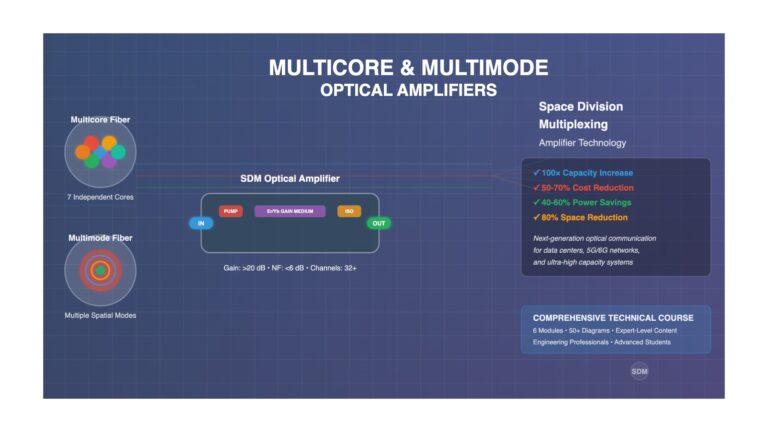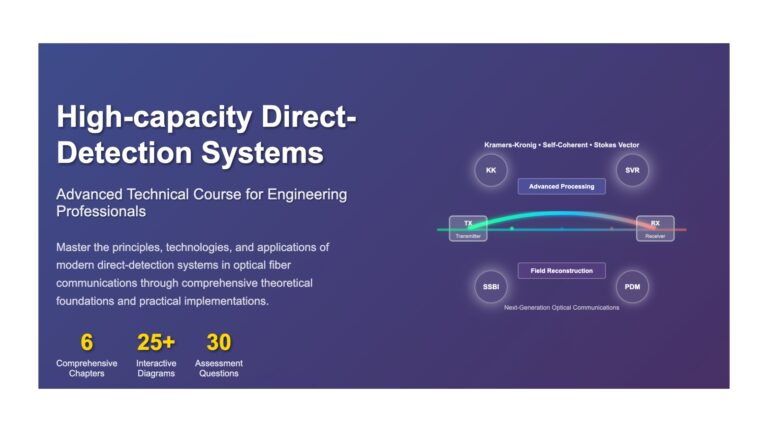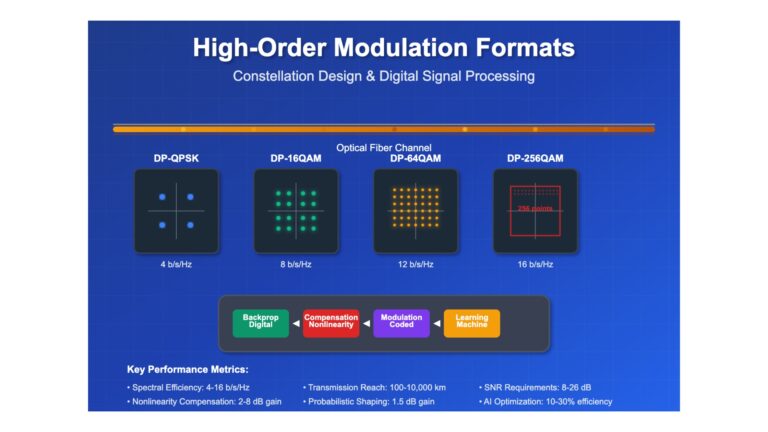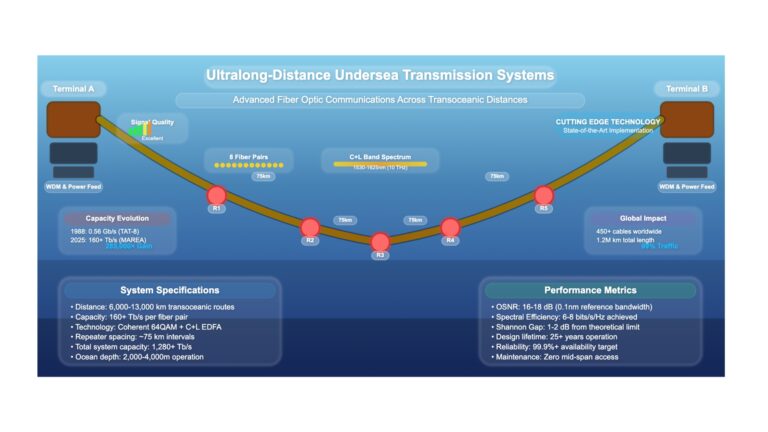Description
Curriculum
Instructor
Learning Objectives
- Understand the fundamental principles of wavelength division multiplexing (WDM) and dense WDM (DWDM)
- Analyze the ITU-T grid structure and channel spacing requirements
- Evaluate optical fiber characteristics and their impact on WDM systems
- Calculate chromatic dispersion, polarization mode dispersion, and nonlinear effects
- Compare WDM, CWDM, and DWDM technologies and their applications
Curriculum
- 6 Sections
- 37 Lessons
- 10 Weeks
Expanse all sectionsCollapse all sections
- Chapter 1 Fundamentals of Wavelength Division Multiplexing5
- Chapter 2 Internet Protocol Fundamentals6
- Chapter 3 Network Integration Architectures4
- Chapter 4 Coherent Optical Technologies and Standards6
- Chapter 5: System Design and Implementation7
- Chapter 6: Future Trends and Challenges9
- 6.1Technology Roadmap: 800G to 1.6T and Beyond
- 6.2Artificial Intelligence and Machine Learning Integration
- 6.3Quantum Technologies and Post-Quantum Security
- 6.4Security Challenges and Solutions
- 6.5Market Evolution and Business Model Transformation
- 6.6Research Frontiers and Breakthrough Technologies
- 6.7Final Assessment Questions
- 6.8Preparing for the Future
- 6.9Course References and Further Reading
admin

3 Students8 Courses
Review
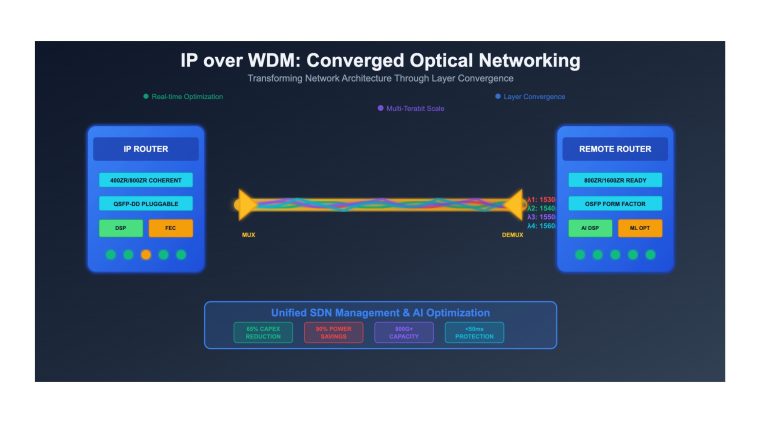
Free
0 student
37 lessons
Language: English
0 quiz
Assessments: Yes
Skill level All levels
Courses you might be interested in
Advanced Technologies
Learning Objectives Understand the capacity limitations of conventional single-mode fiber systems Analyze the benefits and challenges of space division multiplexing approaches Compare multicore fiber (MCF) and multimode fiber (MMF) implementations...
-
42 Lessons
Free
Advanced Technologies
Learning Objectives Understand the fundamental principles of direct-detection optical communication systems Compare direct-detection systems with coherent detection systems Identify key applications and advantages of direct-detection technology Analyze the basic architecture...
-
51 Lessons
Free
Advanced Technologies
Learning Objectives Understand the basic principles of optical fiber communication systems Analyze the fundamental limitations in optical transmission Explain the role of digital signal processing in modern optical systems...
-
53 Lessons
Free
Advanced Technologies
Learning Objectives After completing this chapter, you should be able to: Explain the historical development and significance of undersea transmission systems Identify the key components and architecture of modern undersea...
-
44 Lessons
Free


